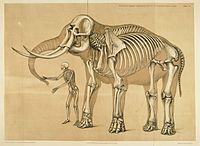Comparative foot morphology

Comparative foot morphology means comparing the feet of different animals to understand how they are different and why. Imagine you and your friend both have feet, but your friend's feet are much bigger than yours. Comparing your feet to your friend's feet would be like doing a comparative foot morphology study. Scientists study different animal feet to learn about their abilities and adaptations, such as running, climbing, or swimming.
For example, a bird's feet are different from a dog's feet because the bird needs its feet to grip onto things like tree branches or prey while flying. A dog's feet are designed for running, with strong muscles and longer toes for pushing off the ground. A horse's feet are larger and stronger than a human's feet, allowing it to support its body weight and run quickly.
By studying foot morphology, scientists can learn more about how animals move and survive in their environments. They can also use this information to develop prosthetics for humans or animals with disabilities.
For example, a bird's feet are different from a dog's feet because the bird needs its feet to grip onto things like tree branches or prey while flying. A dog's feet are designed for running, with strong muscles and longer toes for pushing off the ground. A horse's feet are larger and stronger than a human's feet, allowing it to support its body weight and run quickly.
By studying foot morphology, scientists can learn more about how animals move and survive in their environments. They can also use this information to develop prosthetics for humans or animals with disabilities.
Related topics others have asked about:
